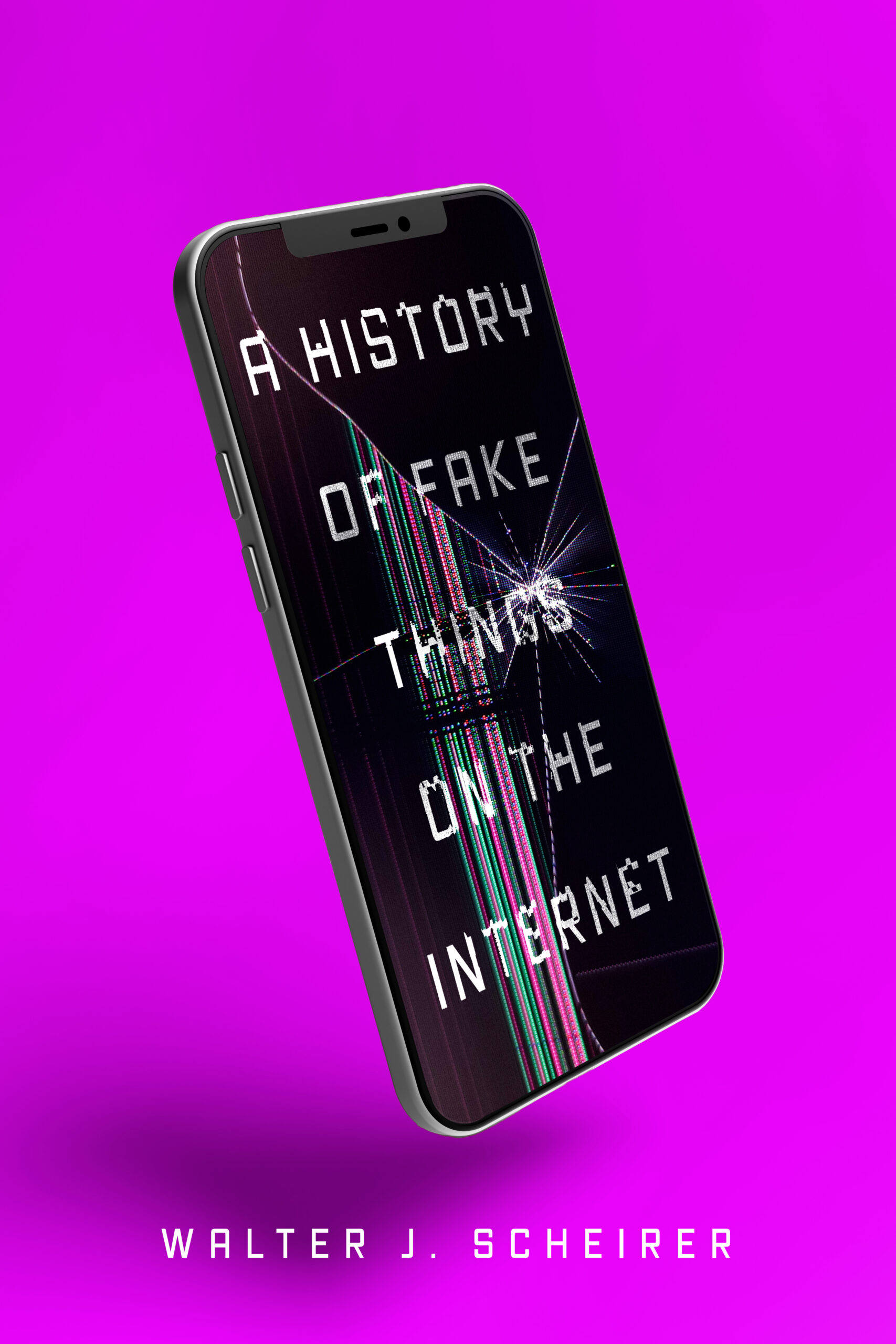WASHINGTON (THE WASHINGTON POST) – What distinguishes toxic falsehoods from sustaining fictions? And which of the two flourishes in the wilds of the internet, where hoaxes thrive and doctored images abound? In “A History of Fake Things on the Internet,” computer scientist Walter J Scheirer proposes that much of what has been disparaged as “misinformation” is best considered under a different rubric: that of art. “Haven’t creative art forms like the novel always challenged the truth in some way?” he provocatively asks. “Why turn away from new innovations in storytelling simply because they provide an outlet for folks intent on making things up?”
Some readers may find it hard to entertain such questions when a small percentage of online deceptions have fomented such dramatic political upheaval: The outrageous QAnon doctrine, which inspired many of the extremists who swarmed the Capitol in 2021, is one of the most loudly publicised lies on the internet. But the intriguing case studies in Scheirer’s bold book demonstrate that the vast majority of “fake things on the internet” are clever and harmless pranks – and that a handful are full-fledged triumphs of the imagination.
Scheirer notes that we are awash in discussion of misinformation, but most of it is alarmist and ahistoric, treating duplicity online as an unprecedented and catastrophic phenomenon. In contrast, he asks us to regard digital fabrications as the latest manifestation of a perennial human tendency. What Scheirer calls “participatory fakery” – the creation of memes, the invention of personas – is in fact continuous with much older practices of collective mythmaking. Is a young woman using a filter to alter her features on Instagram really so different from the ancient Greek artist who embellished a figure in a painting on a pot? Is a teenager who exaggerates an anecdote in an online forum really so different from an oral storyteller adding idiosyncratic flourishes to a familiar tale?
Drawing on a framework developed by the pioneering anthropologist Claude Lévi-Strauss in the 1960s, Scheirer argues that humanity always occupies “two parallel timelines: the physical world (ie, the historical timeline) and the myth cycle (ie, a fictional timeline).” Both are indispensable: We are confined to reality, but we cannot confront facts (or even make sense of them) without the salve of fiction. As Joan Didion so famously put it, “We tell ourselves stories in order to live.”
Scheirer claims that we have always told ourselves stories in order to live, but he also understands that the stories have changed along with the mediums in which they are told. In the 19th century, as soon as photography was developed, methods of falsifying images were invented on its heels. “Small-scale retouching of faces to remove blemishes, blotches, freckles, and other minor imperfections visible on a negative was an accepted practice at studios,” Scheirer writes. Objects could also be inserted into photographs, and “more elaborate photomontages could be achieved by combining significant portions of different images.” Soon, “intentionally absurd” collages were all the rage: “Whimsical scenes began appearing on postcards as advertisements for local regions and products.” In one representative image, an advertisement for Wisconsin, men wielding a saw attempt to slice through log-size cobs of corn allegedly found in the state.

But the technologies that allowed for these mischievous and innocuous revisions were soon put to nefarious uses. In 1976, after the death of Mao Zedong, Chinese censors expunged four of his loyal followers from state-sanctioned history by removing them from a photograph taken at his funeral. Meanwhile, Scheirer writes, “Albania’s leader throughout most of the Cold War, Enver Hoxha, routinely purged his perceived enemies, as well as the historical record. In one particularly chilling photo, two high school classmates of Enver were erased, yet their shoes remained visible.”
In post-Maoist China and Soviet Albania, authoritarian regimes exercised a monopoly on mythmaking by fashioning and disseminating a single inflexible fiction. But from the moment of its inception, the internet democratised the ability to revise reality. The hacking scene that emerged in America in the 1970s and ’80s was not the preserve of a small elite. Though the computer buffs who inaugurated the subculture all had a modicum of technical expertise, the barrier to entry was low, and the crew that assembled was motley. Initially, high jinks and inside jokes predominated. Mike Schiffman, a hacker who went by the name “route,” tells Scheirer that hacking was “a lot like professional wrestling; you have these bombastic personality types that hide not behind flashy costumes, but nom de plumes.”
As much performance artists as they were coders, the first generation of hackers ribbed each other in iconic electronic zines like Phrack and 2600: The Hacker Quarterly, and in the now-obsolete genre of the textfile. These “digital texts circulated as individual files” were often “a blend of technical elements” and “fantastic elements that push the imagination into the new realm of cyberspace.” Early files contained dumps of real data, dumps of fake data and outlandish narratives. Interspersed among actual information about how to break into various operating systems were boasts about obviously fictional exploits, code purporting to shut down telephone lines and elaborate stories about UFOs. Competing narratives proliferated as rival hacking groups responded to one another’s gibes and invented ever zanier gambits. Many of the outsize personalities involved in this extended repartee would eventually put their technical skills to work in the tamer and more professionalised computer security industry, which would develop over the next few decades.
Ultimately, “A History of Fake Things on the Internet” is not only a history of (some) fake things on the internet but also a history of early internet culture, a history of early photography and much more. All of the stories and theories that feature in the book are entertaining; only some of them are obviously relevant to the question of online fakery. – BECCA ROTHFELD






